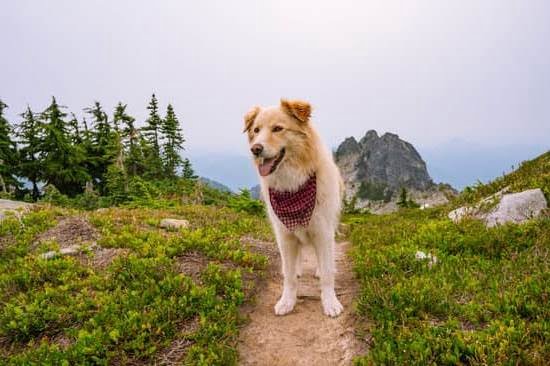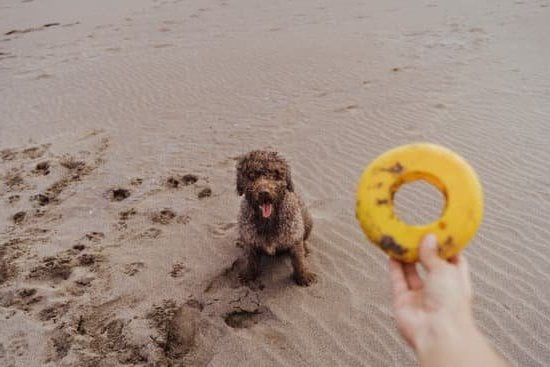Introduction
Rescuing a scared dog can be both rewarding and challenging. On the one hand, providing a home for an animal in need is incredibly rewarding. On the other hand, a scared rescue dog may require patience and specialized training approach to reach their full potential. It’s essential to take your time introducing yourself to the new dog slowly, building up trust, developing communication skills with them, and creating clear expectations for everyone involved. Creating a proper plan for successful training is essential for providing your rescue dog with the chance to overcome their fear and settle into their new home happily.
By taking it slow and using positive reinforcement training methods along the way, you will be able to create a safe space where your scared rescue dog can learn more about being around humans confidently and gradually build trust between you two. The first step is learning as much as possible about how best to read your dog’s emotions by paying attention to their body language. Next, familiarize yourself with desensitization techniques – these work well when working with fearful dogs by helping them get used to new environments or experiences through gradual exposures while maintaining control of the situation so that your dog never feels overwhelmed or threatened. Additionally, implementing rewards-based obedience training during this process can help provide structure and foster positive relationship dynamics between you two. Lastly, remain consistent—once you establish practices that work for everyone involved in caring for or interacting with the rescue dog, sticking to those rules helps them better understand what kind of behaviour is expected from them in any given situation. With these tips in mind and some dedication from everyone involved, rescuing a scared dog can turn out to be an incredibly rewarding experience!
Gaining Insight
Developing an understanding of your rescue dog’s behavior and body language is key to identifying the root cause of their fear or anxiety. In order to gain this insight, it’s important to observe and recognize signals that indicate when they feel scared, anxious or stressed. These signals may be subtle movements such as trembling, cowering, excessive panting or lip licking. They can also include more obvious behaviours such as growling, barking, biting or zoning out. It’s essential that you don’t force yourself on them during this observation process; coexist in the same space until they’re comfortable with your presence and then slowly move closer when ready.
In addition to observing their behaviors, it’s helpful to inquire about the circumstances around their rescue and what happened before they came into contact with you. Are there any triggers that seem to set them off? When do they display signs of stress and why? Although these questions may be difficult for a rescue dog to answer directly, being aware of the answers can help shape a more effective training plan going forward.
Establishing a Secure Environment
Creating a secure environment for a scared rescue dog is essential for helping them to feel comfortable. Start by structuring the area with familiar items from their past and provide safe distractions, like soft toys or chewables. Make sure the room is away from noise and has boundaries so they can start adjusting in a stress-free setting. Cushions and blankets to lie on should also be used to make the space more inviting. Additionally, try to limit the use of commands and focus instead on building trust through positive reinforcement like praise and treats. You can also play soothing music and use items that have a soothing scent such as lavender or chamomile to help them relax and adjust to their new surroundings while they acclimate.
Training Plan
Creating a training plan for a scared rescue dog can be difficult, but also incredibly rewarding. The individualized plan should take into account the specifics of the rescue dog’s physical and emotional needs. To start, you can get an understanding of the dog’s current behaviour and work toward building upon that knowledge. Aspects such as environment, previous experiences, and any medical or psychological issues should be taken into account when creating this individualized plan.
Once you have assessed the dog’s needs, it is important to set realistic goals for the training process. Gradual improvement is key in order for him/her to trust again, so focus on providing positive reinforcement as he/she progresses. Depending on how long the pup has been living with fear or anxiety, it may take longer to build up his/her confidence. Activities such as socialization with other dogs and humans will help tremendously in establishing a sense of safety. You can also begin teaching basic obedience commands such as sit, wait and stay to slowly acclimate your pup to responding to verbal instructions.
Patience and consistency are essential keys to success when training a scared rescue dog; they must not be rushed into anything they do not feel comfortable with, nor should punishment be used when they make mistakes as this will only intensify their feeling of unease towards humans. Creating an individualized plan that takes into careful consideration the state of mind and physicality of your scared rescue pup will go a long way in helping him/her adjust to their new life!
Rewards System
When working with a scared rescue dog, it is important to implement a positive reinforcement and rewards system. Rewards can come in many forms such as treats, toys, verbal praise, belly rubs or even small amounts of extra playtime. Start by providing rewards after he has been successful completing desired activities such as going for a walk, sitting when asked or staying calm when meeting people. Make sure to use the same reward for the same behaviors each time – this way your pup will quickly learn how to respond properly. As the pup’s confidence grows, be sure to increase difficulty level of tasks over time and continue providing rewards for successful completion of the new challenges. This will help reinforce good behavior and help your pup gain trust in himself and his surroundings. Additionally, ensure you are consistent with the training rules by following through with predetermined consequences if undesirable behaviors occur (such as timeout areas or verbal scolding). With this ongoing support system, your pup is guaranteed success!
Desensitizing Exercises
Start with mild and non-threatening situations and gradually increase the intensity, exposure time and complexity of them. For example, begin by introducing a recording of a loud noise such as thunder at a low volume from far away, before gradually increasing the volume and reduce the distance between your dog and the noise. Similarly, you could start out having someone gently petting your dog while they are being fed treats, then progress to more touches until your dog is comfortable enough to be petted while standing or laying down. You can also take walks in unfamiliar areas or around other people or animals to help desensitize your pup to new environments. Additionally try exposing them to familiar items presented in an unfamiliar way such as novel scents or food items that they’ve never smelt or eaten before. All these techniques will help ensure that the fear response triggered by their environment is slowly undermined in order for them to learn positive associations with their newly experienced surroundings.
Activities for Building Self-Confidence
1. Positive reinforcement: You can use positive reinforcement to encourage the dog to do what you want him to do, like coming when called and responding to commands. When he does something good, reward him with a treat or a pet and tell him what a good job he did.
2. Socialization: If you have other pets in your home, you should introduce your scared rescue dog slowly so that he can become comfortable with his new family members. Reward him for calm behavior and provide protection if needed until all parties are more relaxed around each other.
3. Games and activities: Engaging in fun activities together is one of the most effective ways to build confidence in rescue dogs. Take them out on plenty of walks and let them explore new smells, sights and sounds without fear or restraints. Teach basic commands such as “sit”, “stay” and “come” using treats and play simple games such as hide-and-seek or fetch together so they can get used to being around people without fear.
4. Playful interactions: When it comes to building self-confidence in anxious rescue dogs, paying attention to their body language is key! Make sure that all interactions are positive, playful and slow so that your dog knows everything will be okay during your time together. Offer plenty of treats rewarding if they start showing signs of relaxation like wagging tails or playing fetch with toys or wiggling excitedly when meeting someone new; any signs of an improved mental state should be rewarded!
Closing Remarks
Training a scared rescue dog can be a difficult, but rewarding experience. When introducing a scared rescue pup into your home, patience and understanding are of the utmost importance. Keep in mind that while they come from uncertain backgrounds with unique experiences, they all need TLC to start creating strong bonds and build trust. With consistent training and forming positive memories with your pup, you can ensure better behaviors in the long run, as well strengthening your relationship with the pup. In addition to patience, using reward-based techniques have been proven to be effective for teaching good behaviors – so don’t forget to bring along lots of treats! And finally, consult with certified professionals who specialize in pet behavior and rehabilitation —they will have the best advice for working through your rescue pup’s challenges and helping them thrive in their forever homes. By utilizing these tips and taking time to genuinely get to know and love your rescue dog, you will be on your way to having a happy pet family member.

Welcome to the blog! I am a professional dog trainer and have been working with dogs for many years. In this blog, I will be discussing various topics related to dog training, including tips, tricks, and advice. I hope you find this information helpful and informative. Thanks for reading!





